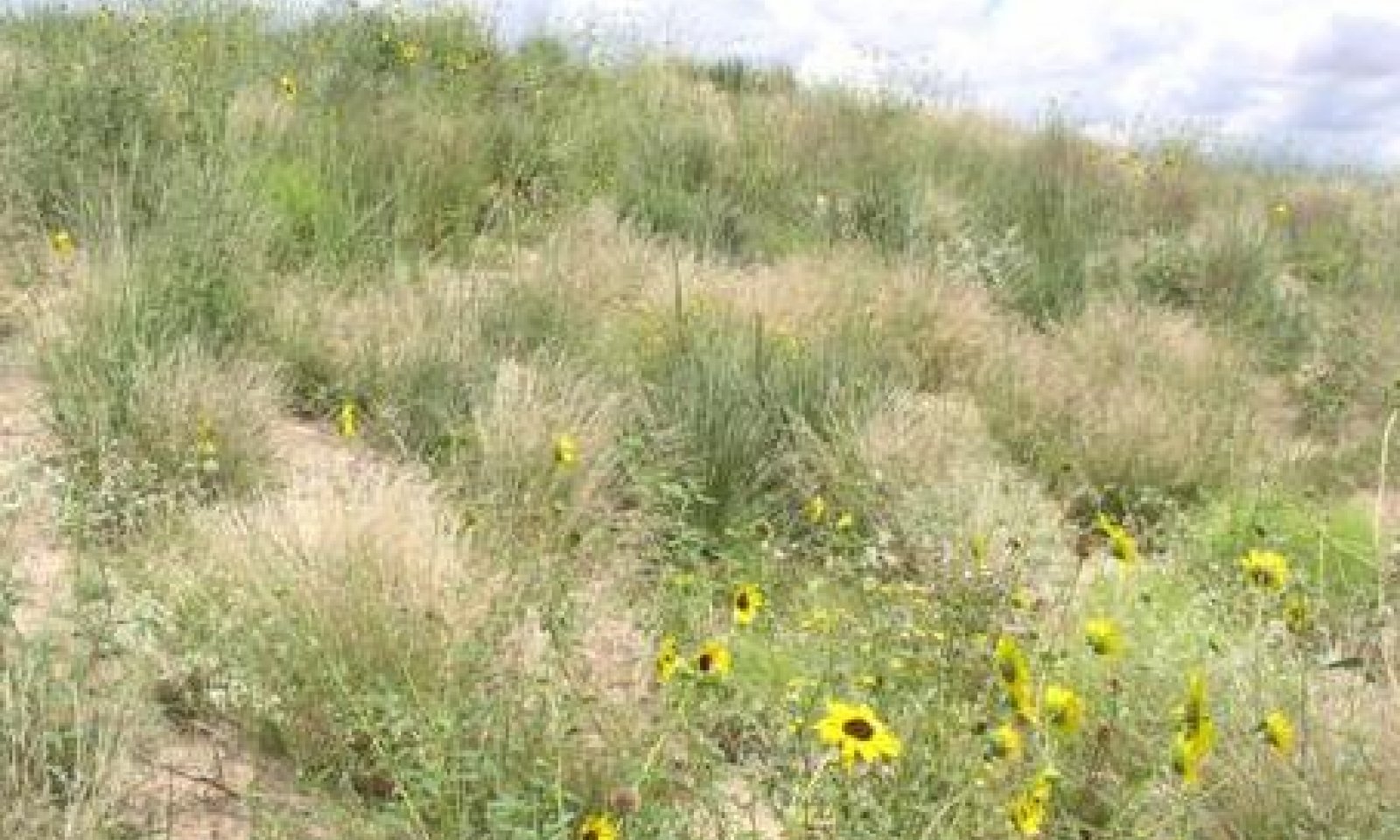
Sand Hills 12-17" PZ
Scenario model
Current ecosystem state
Select a state
Management practices/drivers
Select a transition or restoration pathway
-
Transition T1A
Absence of disturbance and natural regeneration over time, may be coupled with excessive grazing pressure
More details -
Restoration pathway R2A
Adequate rest from defoliation and removal of woody canopy, followed by reintroduction of historic disturbance regimes
More details -
Transition T2A
Absence of disturbance and natural regeneration over time, may be coupled with excessive grazing pressure
More details -
Restoration pathway R3B
Adequate rest from defoliation and removal of woody canopy, followed by reintroduction of historic disturbance regimes
More details -
Restoration pathway R3A
Adequate rest from defoliation and removal of woody canopy
More details -
No transition or restoration pathway between the selected states has been described
Target ecosystem state
Select a state
Description
The Tallgrass/Shrub Community (1.1) is a mixture of tallgrasses (50-60%), shrubs (35-45%) and perennial forbs (10-15%). A varying amount of annual forbs can be found depending on the moisture situation in a given year. The dominant tallgrasses are sand bluestem, giant sandreed, little bluestem and the taller dropseed species. A good variety of forbs exists but the amount varies greatly from year to year. The major shrubs are sand sagebrush and skunkbush sumac. The woody shrubs are more stable from year to year and can better withstand the climatic extremes; therefore, it is probable that shrubs were a major component of the reference plant community.
Submodel
Description
As retrogression proceeds, this site will move towards the Shrub/Midgrass/Annuals Community (2.1). Tallgrasses will decline and midgrass species will increase along with a dramatic increase in the shrub component. Shrubs comprise of greater than 60 percent production, grasses less than 25 percent production, and forbs less than 15 percent production. Heavy disturbance by hoof action to the soil surface can cause an increase in annual species. There will be a marked increase in western ragweed, dropseed species, three-awns, and a wide variety of lower successional species. Sand sagebrush and skunkbush will increase dramatically. On some sand hills sites, yucca may begin to increase. Bare areas will become more numerous and wind erosion will increase.
Submodel
Description
If heavy continuous grazing continues, along with periodic droughts, retrogression will move towards a Shrub/Annuals Community (3.1). In extreme cases, shrubs will dominate with mainly annual forbs and grasses being present. Sand sagebrush and skunkbush canopy will continue to increase, on some sites yucca may increase and become a high percentage of the total plant community. Shrubs encompass approximately 70 percent annual production while forbs compose of 30 percent annual production. Numerous bare areas will be scattered throughout the site. The rolling mid-dunes areas may begin to show signs of wind erosion from the lack of deep rooted grass cover.
Submodel
Mechanism
With heavy continuous grazing pressure, no fires, and no brush management practices conducted on this plant community, the Tallgrass/Shrub State will transition to the Shrub/Midgrass State.
Mechanism
With the implementation of conservation practices such as Prescribed Grazing and Brush Management, the Shrub/Midgrass/Annuals Community may be able to shift back to the reference plant community or the Tallgrass/Shrub Community. Caution must be exercised in applying Brush Management as brush may need reduction but not eradication due to susceptibility to erosion and woody plants help in the stabilization of the Sand Hills site.
Relevant conservation practices
| Practice | External resources |
|---|---|
|
Brush Management |
|
|
Prescribed Grazing |
Mechanism
With heavy continuous grazing, no fire, no brush management, and no pest management practices utilized, the Shrub/Midgrass/Annuals Community will transition into the Shrub/Annuals Community.
Mechanism
Implementation of various conservation practices such as Prescribed Grazing, Brush Management, and Pest Management are required in order to shift from the Shrub/Annuals Community to the Tallgrass/Shrub Community. Approximately four to five years are needed to complete the transition.
Relevant conservation practices
| Practice | External resources |
|---|---|
|
Brush Management |
|
|
Prescribed Grazing |
|
|
Integrated Pest Management (IPM) |
Mechanism
Implementation of various conservation practices such as Prescribed Grazing, Brush Management, and Pest Management are required in order to shift from the Shrub/Annuals Community to the Shrub/Midgrass/Annuals Community. Approximately one to three years are needed to complete the transition.
Relevant conservation practices
| Practice | External resources |
|---|---|
|
Brush Management |
|
|
Prescribed Grazing |
|
|
Integrated Pest Management (IPM) |
Model keys
Briefcase
Add ecological sites and Major Land Resource Areas to your briefcase by clicking on the briefcase (![]() ) icon wherever it occurs. Drag and drop items to reorder. Cookies are used to store briefcase items between browsing sessions. Because of this, the number of items that can be added to your briefcase is limited, and briefcase items added on one device and browser cannot be accessed from another device or browser. Users who do not wish to place cookies on their devices should not use the briefcase tool. Briefcase cookies serve no other purpose than described here and are deleted whenever browsing history is cleared.
) icon wherever it occurs. Drag and drop items to reorder. Cookies are used to store briefcase items between browsing sessions. Because of this, the number of items that can be added to your briefcase is limited, and briefcase items added on one device and browser cannot be accessed from another device or browser. Users who do not wish to place cookies on their devices should not use the briefcase tool. Briefcase cookies serve no other purpose than described here and are deleted whenever browsing history is cleared.
Ecological sites
Major Land Resource Areas
The Ecosystem Dynamics Interpretive Tool is an information system framework developed by the USDA-ARS Jornada Experimental Range, USDA Natural Resources Conservation Service, and New Mexico State University.




